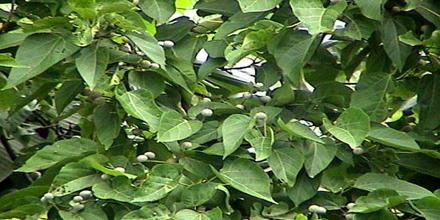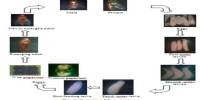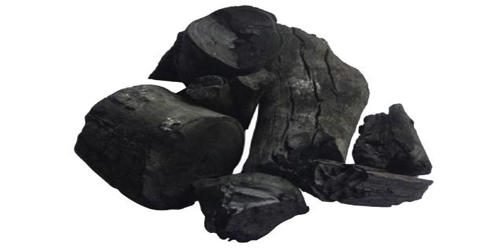Screening of Hypoglycemic effect and Antioxidant potential of
Trewia nudilfora leaf extracts
A number of diseases has been discovered, identified, prevented and treated in the past centuries. But the application of medicinal plants in the advancement of curing illness is still unparalleled. Plants having medicinal use is found to be popular in cosmetic, agriculture and food industry along with pharmaceuticals. With the vastness of medicinal research it is inevitable to study the herbal origin of drugs.
Medicinally, herbs can be precisely defined as crude drugs of vegetal origin to make use for controlling diseased conditions, often of a prolonged nature, or to obtain or sustain a condition of developed health. (Sandra Bastin,1999).
The World Health Organization approximations are such that 80 percent of the earth’s inhabitant’s use plants parts to produce a desired outcome on the body. Herbalism is a vital part of customary Asian, traditional American, homeopathic, and naturopathic medicines, and European physicians relied profoundly on herbal products. (Sandra Bastin, 1999).
Herbal medicines:
For basic description, traditional use of herbal medicaments infers extensive historical use, and is categorically true for many products that are accessible as ‘traditional herbal medicines’. Today, doctors called herbalists, at times use plants and other natural items to cure ailments. They use many of the same plants used during the Mississippian time period. Some may believe that herbal medicine is safer to use than hazardous chemicals. Ancestors used herbs in curing various illness, some of ancient systems are shown as follows:
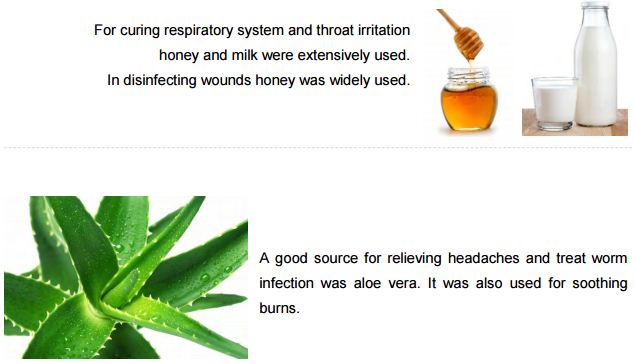
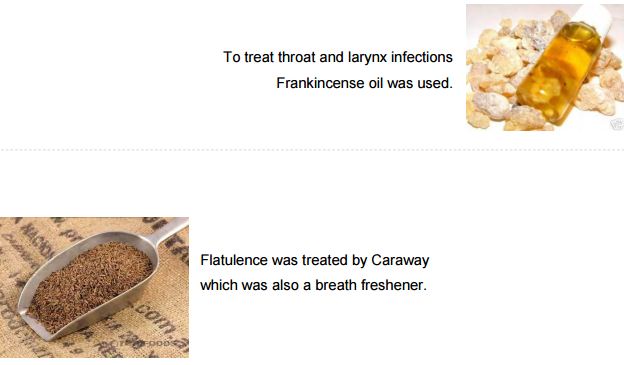
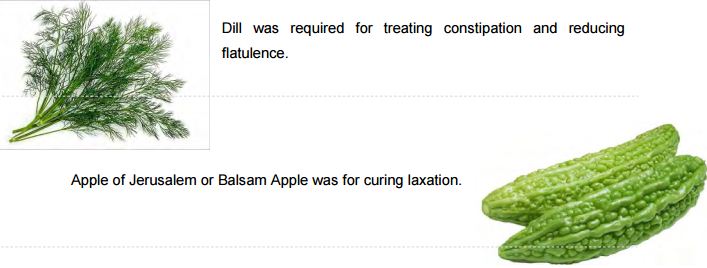
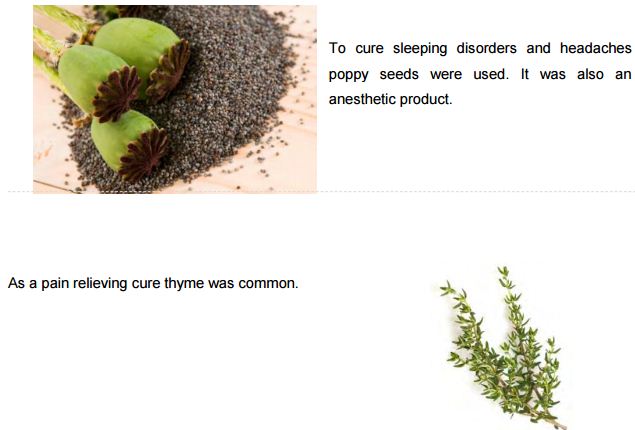
Few therapies of the ancient culture adopted several methods like –
- Cure for Indigestion – Inside four sugar cakes a hog’s tooth is crushed and inserted, and eat for four days.
- Skin Lesions – When the scab has fallen off, it is mixed with fresh milk and applied as a dressing to the wound.
- For baldness – Fat of lion, hippo, cat, ibex, crocodile and serpentine were mixed together and applied to the head.
Brief history of herbal medicines:
The pharmacological management of disease with herbal products began long ago (Schulz et al.2001). All around the world methods of folk curative commonly includes herbs as part of their tradition.
Acknowledgement of the potential health endorsing effects of plants can be sketched back to the initial recorded history, as demonstrated by the complex scheme of medicine based on plants, animal substances and secretions and minerals employed in primeval Egypt along with the widespread herbs of ancient China (Dubick, 2015).
Chinese natives have been using traditional Chinese medicine from ancient period. Even though mineral and animal resources were used, the prime source of remedies was botanical.
Above 12,000 items casted off by traditional therapists, about 500 are used in common routine (Li, 2000). In China traditional Chinese medicine is still in mutual use. Having the maximum prevalence of use in rural areas more than half the population frequently uses old-style cures.
About 5000 traditional remedies are existing in China which accounts almost one fifth of the whole Chinese pharmaceutics industrial market (Li, 2000).
From China several herbal remedies got its way into the Japanese systems of traditional remedial. In the ninth century herbs inherent by the Japanese were classified to be the first pharmacopoeia in Japanese traditional treatment (Saito, 2000).
Predominantly practiced in India, Ayurveda, is a medical system which has been recognized for about 5000 years. This comprises of diet and remedies with herbs, while stressing the body, and soul in the process of preventing disease and treatment (Morgan, 2002).
Since 1950s till now, practice of herbal medicines has extended abruptly in developed states. From a many sources, including the ESCOP (European Scientific Cooperative on Phototherapy, 1999), German Commission E (Blumenthal et al., 1998) and the WHO (World Health Organization, 1999) monographs on particular herbs are offered. For example, the WHO monographs has described the herb by plenty of criteria including substitutes and colloquial names and the herb part normally used, its topographical distribution, trials required for identification and describe the herb which includes macroscopic and microscopic analysis and clarity evaluation, the active values (when known), medicinal uses, dosage forms and dose up, pharmacology, adverse reactions and contra-indications.
Medicinal plants:
People of the ancient civilizations greatly relied on natural flora and fauna for their endurance. WHO defines medicinal plants as “A medicinal plant is any plant in which one or more of its parts, comprises ingredients that are used as healing purposes, or which are pioneers for chemo therapeutic semi-synthesis”.
When a plant is labelled as ‘medicinal’, it is inferred that the plant as a whole or its parts are valuable as a helpful agent or remedy or an active component for a curative research. Medicinal plants may hence be defined as a cluster of plants which retain special properties or characteristics that designate them as potential ingredients of drugs and therapeutic intermediaries which are utilized in healing.
Because of the presence of effective biologically-active chemicals numerous plants are used as stimulating elements, fantasizers, and poisons or as medicaments. Chemicals like alkaloids, tannins, glycosides, volatile oils, fixed oils, vitamins and minerals can make a plant worth medicinal value.
Bangladesh’s stand in Medicinal plants:
As a subtropical country Bangladesh is a good repository of medicinal plants. There are about 5000 angiosperms distributed among 200 families. For the treatment of different types of diseases approximately 500 of these are being used as traditional medicines. Among the 2000 medicinal plants that are included in the ‘Materia Medica’ of the subcontinent, more than 500 are growing in various regions of the country like- Dhaka, Rajshahi, Sylhet and Chittagong (IUCN, 2003).
Variations can be found in using the plant parts as medicine in Bangladesh. The leading part being leaves which is used in a majority of medicinal plants and used parts also includes barks, stems, fruits, seeds, rhizome, whole plant and inflorescence.
Purpose of the investigation:
Modern science is advancing with tremendous speed and newest technologies are evolving alongside it. Thus creating a demand of freshness and latest invention in everyday life, new syndromes are identified and so is the cure of the disease. But continuous use of drugs has made human beings resistant to some medications. As a result it leaves innovation with a challenge of keep producing new drugs for both new and existing treatments. Many types of drugs are available in the market yet being aware of the possible complications of the synthetic drugs people lean towards herbal medicines.
As per the phytochemical screening of the chosen extract the experimented specimen contains glycosides, flavonoids, alkaloids, steroids and previous research shows that the specimen containing these elements will be of great medicinal value. So, for the craving need of the world we chose to work with the leaves of a local tree Trewia nudiflora to investigate some of its medicinal properties. Through phytochemical screening of the various extracts of the leaves of Trewia nudiflora we have chosen the ethyl acetate extract and chloroform extract to conduct the further study.
This plant is used in eliminating bile and phlegm. In case of blisters and to heal wounds and injuries the leaves and its decoction are applied. The bark of the plant is used in treating inflamed thyroid gland. Decoction of the roots is also a stomachic and alterative which is used during flatulence, gout and rheumatism. Shoots decoction can also be used as a remedy of flatulence and swellings.
So from the above uses mentioned about the selected tree, it is evident that this tree can be a good source of various bioactive constituents.
If the toxicity of the components can be eliminated which are poisonous to human health then different parts of this tree can be used for various treatment. The current study with this tree was undertaken in order to screen the hypoglycemic and anti-oxidant activity of the leaves of the plant.
Literature Review:
Trewia nudiflora:
Trewia nudiflora is medium in size, dioecious, deciduous, woods are branchless and leaves are opposed, oval 11-20 cm by 7-12 cm, cordate, acuminate, long pointed, when young leaves are hairy and later becomes glabrous, and stalks are 2-7 cm long. Male and female flowers develop on altered trees. Male trees are usually yellow 7.5mm across, contains long slack and loose inflorescences, length is 10-20 cm. The female plants are solitary or 2-3 combined within the common axillary peduncles, green in color and about 2.5 cm in length. Fruits are plump, depressed globose, grayish green in color, 3cm by 3.5cm in volume (Balakrishnan, 2009).
The plant genus is of the spurge family (Euphorbiaceae) containing two species, viz. Trewia nudiflora and Trewia polycarpa. It is usually found from Himalayan to Hainan Island.
Chemical components:
The bark comprises of a pentacyclic triterpene ketone, teraxerone, β-sitosterol and nudiflorine (Mehrotra and Rastogi, 1990). Plant contains a pyridine alkaloid, N- methyl- 5- carboxamide- 2 pyridone. Leaves contain an alkaloid nudiflorine. Seeds contain an alkaloid ricinidine. The seeds also contain a maytansinoid compound, trewiasine (Balakrishnan, 2009).
Distribution:
Most of its species are found in Eastern, the Indian subcontinent, Southern Asia, Eastern Australia, and certain islands of the western Pacific. These are grown well in districts on river, stream and canal bank.
Taxonomical Classification:
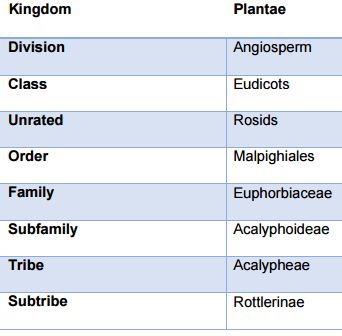
Synonyms:
Some substitutional synonyms of Trewia nudiflora are –
- Trewia nudiflora L.
- Trewia polycarpa
- Mallotus cardiophyllusMerr
- Trewia integerrima Stokes
- Trewia marcophyla Roth
Different Names:
- English Name – False White Teak
- Bengali name –
- Latim,
- Lattu,
- Bhatam,
- Pitali,
- Panigambhar,
- Meragota
- Gotagamar (Sylhet)
Tribal name –
- Bol-diktak
- Bolno-khap (Garo)
- Hruprukban (Mogh),
- Chagalla-dibhangor (Chakma),
- Rinmoro (Marma),
- Pitagola (CHT).
Related Publications on Trewia nudiflora:
The chosen tree has not been studied profusely yet various experiments were carried out to determine the medicinal importance of the different parts of Trewia nudiflora.
- Ethanolic extracts of the leaves contains anti-diabetic, anti-hyperlipidemic and antioxidant properties (Tiwari et al., 2014)
- Ethanol extracts of the roots and leaves has substantial antioxidant activity in comparison with ascorbic acid (Balakrishnan et al., 2013)
- Alcoholic extract and chloroform extract of the roots possess varying degree of antibacterial and antifungal properties (Chamundeeswari et al., 2004)
- Significant anti-inflammatory and anti-nociceptive activities of the roots (Chamundeeswari et al., 2003 )
- Anti-arthritic activity of the roots on rats gave positive results (Chamundeeswari et al., 2003)
- Phytochemical studies shown the existence of glycosides, flavonoids, alkaloids, quinones, terpenoids, carbohydrates, amino acids and proteins. (Chamundeeswari 2004, Tiwari 2014).
Present Study Protocol:
The study protocol of this experiment is designed to observe the anti-oxidant and hypoglycemic activity of the leaf of the tree Trewia nudiflora. The study protocol is consisted of the following steps:
- Collection of the leaves of the desired tree.
- Dry the leaves properly under shade.
- Crush the leaves in a grinder into fine powder.
- Prepare the extract by soaking in the solvents.
- Screen for the phytochemical components present.
- Screening of the anti-oxidant property of the extract on Swiss albino mice.
- Screening of the hypoglycemic (oral glucose tolerance test & normoglycemic test) activity of the extract on Swiss albino mice.
Preparation of plant extract
Collection of plant parts and identification:
The tree Trewia nudiflora was selected in this project to run some pharmacological investigation. The leaves of this tree were collected from Natore, Rajhshahi district of Bangladesh on March 2015. The leaves chosen for the experiment were taxonomically recognized by the Bangladesh National Herbarium, Dhaka to collect the accession number 4500 for our specimen. This tree is found in various places around Northern part of the country.
Preparation of Extract:
The leaves of Trewia nudiflora was collected and cleaned in dry conditions for coarse grinding. The leaves were separated from undesired parts of the tree to prepare for crushing. The collected material was then shade dried to achieve the necessary form for grinding. When completely dried the leaves were crushed to fine powder. Around 500gm of powdered leaf was kept in an airtight container in a suitable cool, dry place for further investigation.
About 900-950ml of ethanol was added to the jars to soak the powder. The jars were filled in such a way that frequent shaking will not cause spilling of the material inside. The jars were handled carefully to let the gaseous substance move out after shaking the contents. More solvent was added in case of full absorption by the powdered leaf of the experimented plant and was followed by frequent shaking and stirring. This process was allowed to continue for 4 days and on fifth day the mixture of both jars were filtered. The whole mixture was coarsely filtered by a clean piece of sterilized cotton and then was filtered through Whatman filter paper (England).
Ethanolic extract was obtained by evaporating 200ml of one of the jar’s filtrate to 50ml in a water bath and then allowed to fan dry to obtained 20ml of green colored thick extract. The filtrate of the other jar was undergone fractional separation to obtain three different type of extract. In this case at first the solvents were n-hexane, chloroform and ethyl acetate. The solvents were removed from the extracts under reduced pressure by using a rotary vacuum evaporator (Model Hei-vap Adv Rotatory Valve Tech, Gwalior, India).
The filtrates was then allowed to evaporate under normal temperature and then in water-bath under temperature of 40-50°C until dried to concentrate. One of the result obtained was a dark green thick oily slur type ethanolic leaf extract of Trewia nudiflora, another filtrate resulted a green yellowish color oily slur and the last extract obtained had greenish orange color oily extract.
Finally all the extracts were transferred to respective enclosed vials for further use and named the ethanolic extract of Trewia nudiflora leaves as ETTL, chloroform extract leaves as CLTL and the ethyl acetate extract of leaves as EATL.
Experimented animal:
For the investigation of the pharmacological activities, Swiss-albino mice was considered as the experimented animal. Around 90 mice of 4-5weeks of age and of either sex weighing around 30-35gm were purchased from animal research institute of Jahangirnagar University, Savar and was approved by “International Centre for Diarrheal Disease Research, Bangladesh” (ICDDR, B). Suitable environmental conditions were arranged to nurture the mice and were timely fed with ICDDR, B’s specific rodent food and water ad libitum. Several polyvinyl cages were used for animal housing from BIK industries, India and for bedding soft wood shavings were used from local timber shops. All the mice were housed in light and dark cycle of 12:12 hour at 23±2°C and 60±10% relative humidity. From one week of before the experiments the mice were accustomed to the laboratory environment. These protocols were followed according to the ethical approval provided by the institute of animals and ethical committee (Zimmermann, 1983).
Phytochemical screening of the leaf extract:
Phytochemicals are non-nutritive plant chemicals containing disease preventive or defensive properties. These chemicals are usually produced by plants to rescue itself but modern research investigated that plenty of those phytochemicals can potentially defend human against diseases (Kumar et al., 2009). To determine the chemical constituents in order to establish a profile for the leaf of Euphorbiaceae family Trewia nudiflora various quantitative chemical tests were performed. The experiments were conducted to identify the phyto-constituents existing in the extracts.
Design of the screening:
Phytochemical analysis of the aqueous extracts was carried out as per the procedure described by Trease and Evans (1989) (Ghani, 2003), (Khandelwal, 2011) for detection of active components.
For the purpose of determining the phytochemical compounds tests were performed for –
- Carbohydrate
- Glycosides
- Flavonoids
- Tannins
- Saponins
- Resins
- Alkaloids
Reagents and chemicals:
The following materials were used –
Chemicals:
- Sodium hydroxide
- Ferric chloride
- Acetic anhydride
- Sulfuric acid
Reagents:
- Molisch’s reagent
- Mayer’s reagent
- Wagner’s reagent
- Hager’s reagent
- Dragendorff’s reagent
For preparing reagents:
- α-naphthol
- Ethanol
- Sulfuric acid
- Potassium iodide
- Picric acid
- Iodine
- Bismuth carbonate
- Sodium iodide
- Glacial acetic acid
Procedure of screening for phytochemical composition:
All assessments were carried according to standard procedures. The processes are briefly given below-
Molisch’s Test:
This test is conducted in order to examine the presence of carbohydrates. A small amount of the Molisch’s reagent (α- naphthol liquefied in ethanol) taken in a test tube in which the test solution is combined. Sulfuric acid is poured down the sides of the test tube and allowed to stand to form layers. When a purple ring appears between the acid and the test layers, positive reaction is considered.
Glycosides test:
In 1ml of distilled water small amount of aqueous extract of the specimen was dissolved. Then a few drops (3-4) of aqueous sodium hydroxide solution was added. Glycoside compounds will show yellow coloration.
Test for flavonoids:
Few drops of dilute sodium hydroxide was added to 1ml of the extract. When the intense yellow color produced goes away by adding a little acid, a positive result is considered.
Test for Saponins:
Frothing test was conducted to check the occurrence of saponins for which the extract was heated to boil over water bath to obtain water extract. After transferring the extract to a test tube it was vigorously shaken and was left to stand for 10 minutes. Presence of saponins will give an outcome of a dense persistent froth.
Tannins test:
Ferric chloride test is performed for testing tannins. 0.5gm of powdered sample is added with 10ml of distilled water and boiled in the water bath for 3 minutes. When cooled it was filtered and the 1ml filtrate was diluted by adding 4ml distilled water. 5% ferric chloride was added to the solution in drops and tannic compound is confirmed when blue-black solution is indicated.
Test for resins:
Small amount of ethanolic or chloroformic extract of the leaves was dissolved in 5-10ml of acetic anhydride by means of gentle heating. 0.05ml of sulphuric acid was added after cooling and the purplish red color when changes to violet indicates resins.
Results:
The obtained results of all the tests conducted-
- Phyochemical Screening,
- Antioxidant scavenging activity
Hypoglycemic tests are provided below:
Results of the phyto-chemical screening and investigation:
Various phytochemical examinations have been done to determine the phyto-constituents of the leaf of Trewia nudiflora, through which following compounds have been determined:
Table: Constituents obtained from Phytochemical Screening:

From the above chart it is visible that the leaf of the chosen sample contains most of the important constituents required to have medicinal value. The different extract composes of these compounds in varying quantities. Multiple (+) symbolizes the presence of the constituent in greater concentration.
Results of the in-vitro screening of the antioxidant activity:
By the application of modified Brand William’s DPPH technique method, the percentage inhibitions of the extracts were found.
The capacity to scavenge the DPPH radical was calculated using the following equation:
DPPH scavenged (%) = A (count) – A (test) / A (count) x 100
Where, A (count) is the absorbance of the control reaction
A (test) is the absorbance in the presence if the sample of the extracts
The percentage inhibitions obtained were plotted in a graph given below. The graph is drawn against the used concentrations.

Results of determine hypoglycemic study in mice:
For evaluating the hypoglycemic property two tests were conducted –
- Normoglycemic study: This study is carried in mice during normal condition to evaluate the reducing power of the blood glucose level at particular times.
- Oral glucose tolerance test (OGTT): In this process glucose solution was administered to the mice after the extract to check the tolerance capacity of the extracts.
The leaves of the tree Trewia nudiflora were found to have hypoglycemic activity close to the standard drug. It is observed that the dose of both EATL and CLTL at 500mg/kg is much closer than that of the dose at 250mg/kg with the standard metformin. Therefore the effect of the extract specimen follows a dose dependent manner. The combined results for both the hypoglycemic tests are briefly given with the two tables below:-
From the normoglycemic study in the albino mice the rate of blood glucose reduction level of ethyl acetate extract is higher than that of the chloroform extract. Thus further detailing investigation can be carried with the ethyl acetate extract of Trewia nudiflora to confirm more promising results.
Table: Effect of on Blood Glucose level in Normoglycemic mice:

After the oral glucose tolerance test (OGTT) in Swiss albino mice we have found that extract of ethyl acetate has significant effect when compared to chloroform extract in reducing glucose level.
Discussion:
The phytochemical studies of the leaf extract have revealed the presence of alkaloids, flavonoids, glycosides, resins, steroids and tannins. The presence of these are usually gives evidence that the sample contains medicinally active components (Zulfiker et al., 2010).
Moreover it is observed from the previous studies that Trewia nudiflora correlated well with the antioxidant property in the presence of hydrogen releasing antioxidant. Increased production of free radicals and sharp decline of antioxidant is found to be the main reason of oxidative stress causing diabetes (Aslan et al., 2010). The destruction of β- cells can be prevented through the antioxidants (Slonim et al., 1983, Murthy et al., 1992) by hindering the peroxidation chain reaction and thus they may perhaps give safety against diabetes (Halliwell and Gutteridge, 1989; Montonen, 2005; Gordon 1996).
Compounds containing natural antioxidant can provide an indication to advance towards an innovative product. Our research is thus designed to frame the antioxidant property of the chosen leaf extract and develop its medicinal values. In order to determine the radical scavenging property, chemical used in our study is DPPH (1, 1 diphenyl-2-picryl hydrazyl). The absorption of the radical takes place at 517nm and the scavenging activity of the aqueous extracts of the leaves of Trewia nudiflora and ascorbic acid were taken at different concentrations.
From our study similar assumptions can be drawn, the demonstration of the results are IC50 value of ethyl acetate extract (EATL) and chloroform extract (CLTL) were 120.06 and 117.05 respectively. And the IC50 value of the ascorbic acid obtained from the study was 146.88. Thus it is found that the EATL has a better hydroxyl radical scavenging effect than the CLTL when compared to standard ascorbic acid.
Diabetes mellitus is a multifaceted disorder that is categorized by hyperglycemia resulting from malfunctioning insulin secretion and/ or insulin action both initiating impaired breakdown of glucose, lipids and protein (Scheen, 1997). Diabetic patients are terrifyingly increasing all over the globe giving a projection of 366 million patients by the year 2030 (Wild et al., 2004). For this reason people in search for least risky control of diabetes are heading towards traditional plant medications.
In normoglycemic mice when extracts were administered at variant dose, a positive effect was considered at 500mg/kg dose rather than 250mg/kg dose. After checking the glucose level shortly, the standard value at 90minutes time was 4.9mm/dl where EATL was 5.08mm/dl and CLTL was 9mm/dl.
Our study method gave positive result when compared to standard drug (Group l) in OGTT. Group lllA and group lllB was administered EATL at two different concentrations 250mg/kg and 500mg/kg and the higher dose gave promising outcomes. Group IVA and IVB was given CLTL in the same concentrations as the earlier extract and here too the dose at 500mg/kg had better results. The glucose level was checked at various time intervals and at 90mintues, the standard had a value of 2.9mm/dl while EATL value was 4.65 at 250mg/kg and 3.02mm/dl at 500mg/kg which was closer than the other extract (CLTL). So it can be said that the sample leaf extracts possess the capacity to release insulin within the body’s pancreatic cells.
In comparison to metformin the EATL shown major reduction of blood glucose level in glucose induced tests and fasting tests which confirm the hypoglycemic activity of the plant extract. Indeed, compounds like flavonoids and verbascoside (Xiong et al., 1996) already have been studied to be antioxidants and validated to be much active ( Gordon, 1996; Rapta et al., 1995; Yokozawa et al., 1997). So the presence of this ingredient is probable to be the cause hypoglycemic effects of the extracts. The comparative result favors to indicate that the plants extracts are good antioxidants and strong hypoglycemic agents.
These observations can recommend that the leaves of Trewia nudiflora is likely to have natural antioxidant growing agent which can be utilized for the treatment of various precarious diseases relating to oxidative stress. Besides various authors stated that plants containing phytoconstituents like flavonoids /steroids are recognized as bioactive anti-diabetic principles (Bever, 1986), (Rhemann et al., 1989).
Since there is a growing trend in using naturally occurring remedies adjunct to conformist therapy, traditional herbs and medicinal plants might offer a valuable source of novel hypoglycemic combinations (Bailey, 1989).
Conclusion:
Since the evolution of human society there always existed various diseases and its cure. Back then herbs and medicinal plants were the only way to find the treatment for diseases. In this modern culture with the advancement of civilization remedy of many deadly illness are discovered although the demand for herbal treatment is still overwhelming. Drugs from herbal sources are known to have fewer toxicity and side effects over the synthetic products. In the current study an uncommon and highly potential plant leaf is examined for antioxidant and hypoglycemic activities. The chosen specimen is the leaf extracts of the tree Trewia nudiflora that grows mostly in the Northern side of Bangladesh.
The components determined by the phytochemical screening of the extract exhibited the presence of various valuable chemicals like- glycosides, flavonoids, steroids etc. The antioxidant study was conducted with the modified DPPH method to know the hydrogen scavenging capacity of the extracts with a standard. In this process the EATL extract was found to have higher potential to inhibit than the CLTL extract. To notify the hypoglycemia effect both normoglycemic and oral glucose tolerance test in Swiss albino mice gave positive outcomes.
The values of EATL extract at a high dose had stronger effects than the CLTL extract but the actual component responsible to show such effects could not be ensured by this study. So broad level analysis of this specimen is necessary for isolating and characterizing of the active compounds.
In the investigation of antioxidant and hypoglycemic property of the leaves of the tree Trewia nudiflora promising results have been interpreted. Both type of the extracts were observed to contain scavenging activity on the DPPH-H radical and hypoglycemic tendencies. Further detailing study is required to observe the mechanism of the impacts closely and draw effective conclusions.
